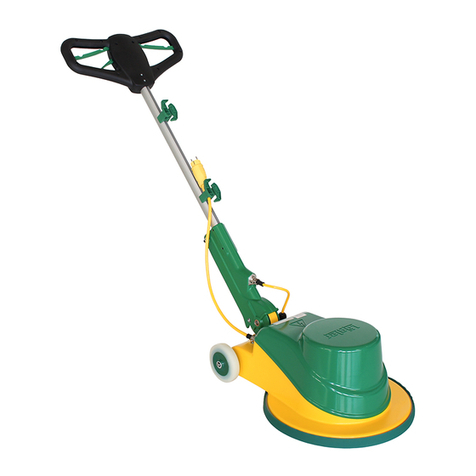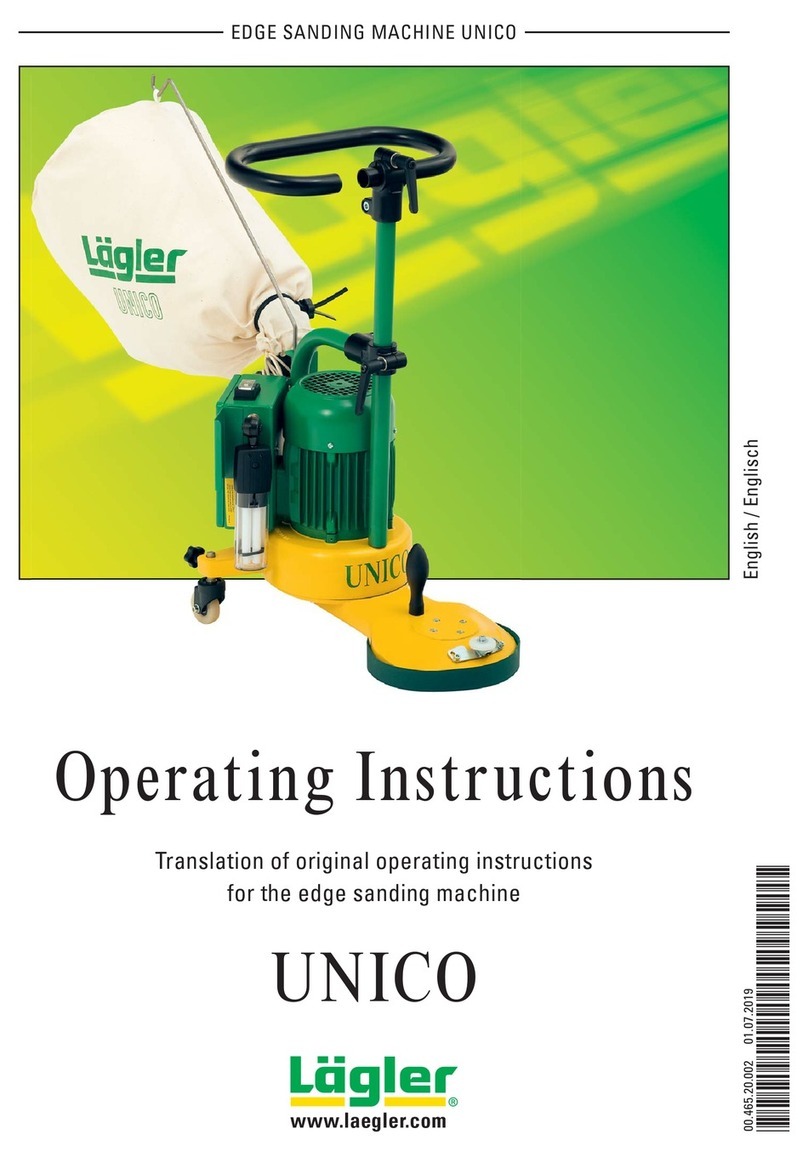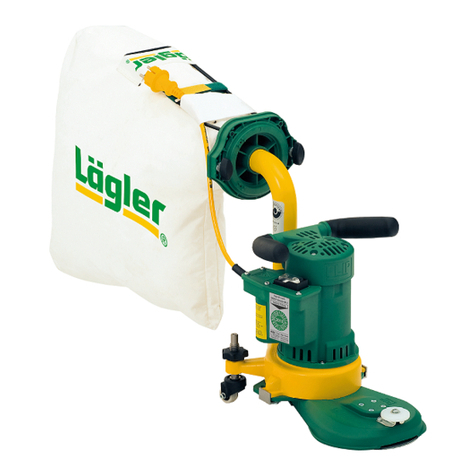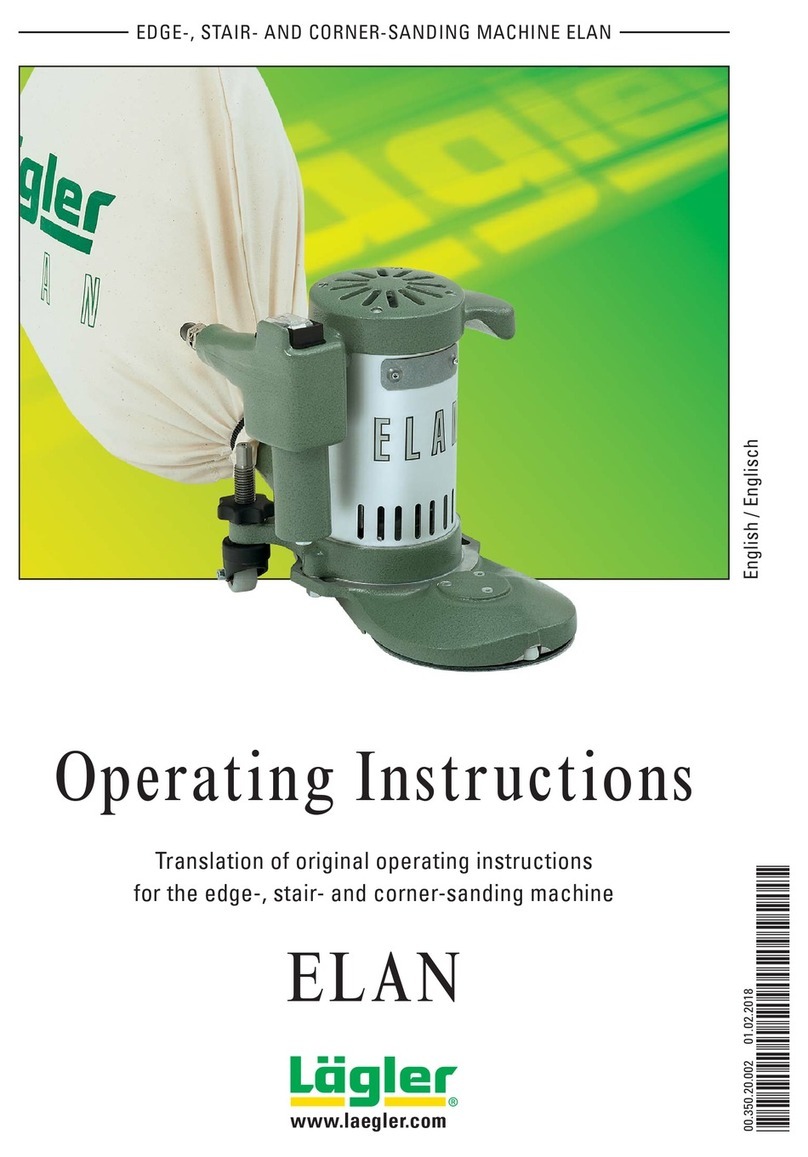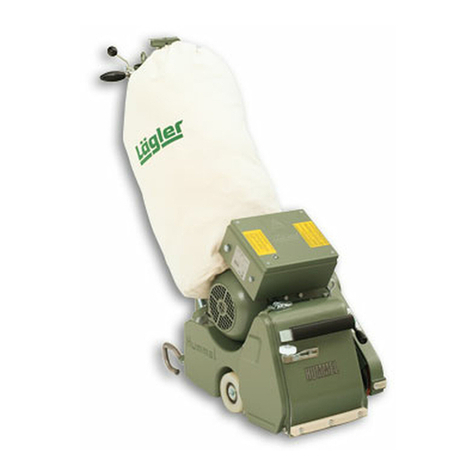
6
Note:
The motor data mentioned above relates to ma-
chines used in the Federal Republic of Germany.
Different data may apply to exported machines.
This is indicated on the motor rating plate.
Note on noise emission:
The specified values are emission values and
are not required to constitute safe workplace
levels.Althoughacorrelationdoesexistbetween
emission and imission levels, it is not possible
to conclude on this basis whether additional
precautionary measures are necessary. Factors
which influence the current imission level ex-
isting at the workplace include the duration of
exposure, the character of the workroom, other
noise sources such as the number of machines
and other adjacent machining processes. The
admissibleworkplace valuescan alsovary from
onecountrytoanother. However, thisinformation
is provided in order to enable the user to better
estimate the level of danger and risk.
2
TECHNICAL DATA
Manufacturer.................................................... Eugen LÄGLER GmbH
Machine type....................................................Belt sanding machine
Serial number.............................................................see rating plate
Year of construction...................................................see rating plate
Motor type.......................................................single-phase AC motor
Voltage ..........................................................................................230 V
Frequency.....................................................................................50 Hz
Output..........................................................................................2.2 kW
Fusing..............................................................................................16 A
Insulation class...................................................................................B
Protection rating...........................................................................IP 54
Safety devices.......................................................no-voltage release
..................................................................thermal switch as overload
..........................................................................protection in the motor
Starting capacitor........................................................................60 µF
Operating capacitor.....................................................................40 µF
Drum diameter..........................................................175.5 mm (6 7/8“)
Drum width...................................................................200 mm (7 7/8”)
Drum speed.............................................................................2400 rpm
Dimension of the sanding belt................200 x 750 ( 7 7/8” x 29 1/2”)
Length.............................................................................1040 mm (41“)
Width................................................................................360 mm (14“)
Height.......................................................................1000 mm (39 3/8“)
Weight of the machining housing..................................41 kg (90 lbs)
Weight of the motor........................................................34 kg (75 lbs)
Weight of the guide tube....................................................4 kg (9 lbs)
Overall weight ...............................................................79 kg (174 lbs)
Dust emission at the workplace............ < 2 mg/m³ (0.024 gr./cu.yd.)
Workplace-related noise emission values...........................76 dB(A)
Technical data
1.5 SAFETY DEVICES
The following parts of the machine are safety devices and must
accordingly be kept in perfect working order:
Sealing felt = Dust shield
Side cover = Dust shield, sanding belt protection
Machine housing = Sanding belt protection
Belt guard = V-belt protection
2


